What is a Gutter Drip Edge?
A gutter drip edge is a piece of flashing that prevents water from going under the shingles or behind the gutter. It covers the gap between your shingles and the gutter to make sure no water goes under the shingles or behind the gutter which will wreak havoc on your home.
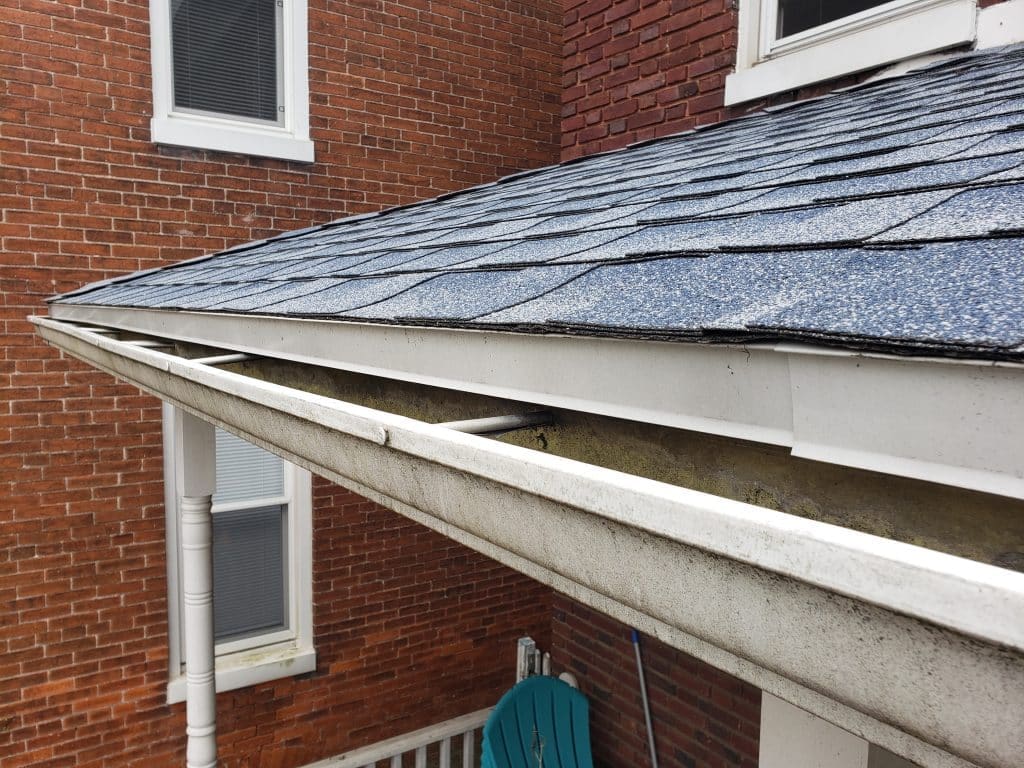
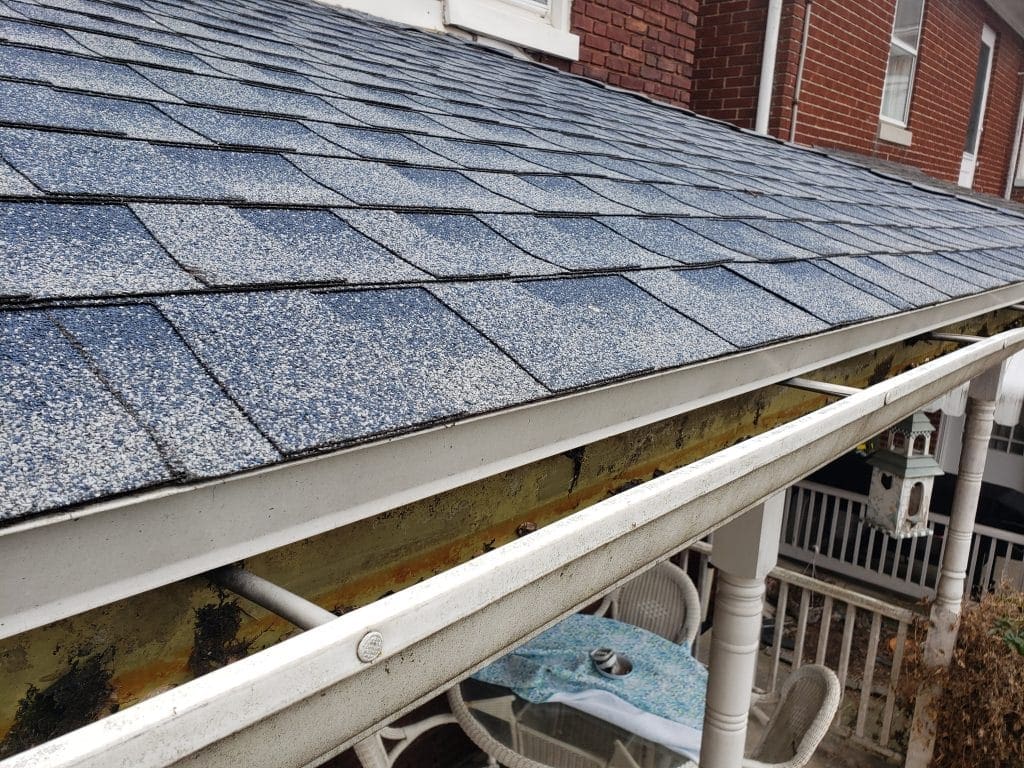
Do Gutters Need a Drip Edge?
Gutter Drip Edge is arguably the most underrated component of the gutter system. Without it, your roofing eave and fascia board WILL be destroyed by water damage. Eventually, the gutters will fall off of the home. It’s hard to believe that this little strip of vinyl or aluminum could be so important, but it’s true
Your fascia board is what supports the weight of the gutters and holds them up. If that wood rots, the gutter system is going to come loose and eventually fall. Therefore, this thin strip of vinyl or aluminum is directly responsible for the longevity of your fascia board and gutter system, as well as your roofing eave.

Fascia Board rot is one of the most expensive repairs on your gutter system. That’s because somebody will have to remove all gutters before working on the fascia board. But these extensive repairs can be avoided by making sure your home has properly installed drip edge along the roofing eave.
CLICK HERE FOR MORE INFORMATION ON FASCIA BOARD ROT
Signs Your Drip Edge Was Installed Wrong
There are a few hiccups that can occur with drip edge. The main one comes when is when somebody installs the gutter over top and it becomes tucked behind. When this happens water goes directly behind the gutters.
The problem with checking your roofing edge and gutters is that you normally can’t see it from the ground level. That’s because the face of the gutter blocks your view from the inside of the gutter. The good news is that there are a few signs to keep an eye out for from the ground. If you are able to climb a ladder and take a look at your roofing eave, that of course would be the best way to know.

Having a drip installed wrong edge is just as bad as not having any at all. When it tucks behind the gutter like in the above photo, that is a recipe for disaster. Fortunately, this is a very easy fix. (as long as they didn’t penetrate the drip edge with gutter spikes or gutter hangers.)
1. Water Leaking Behind Gutter
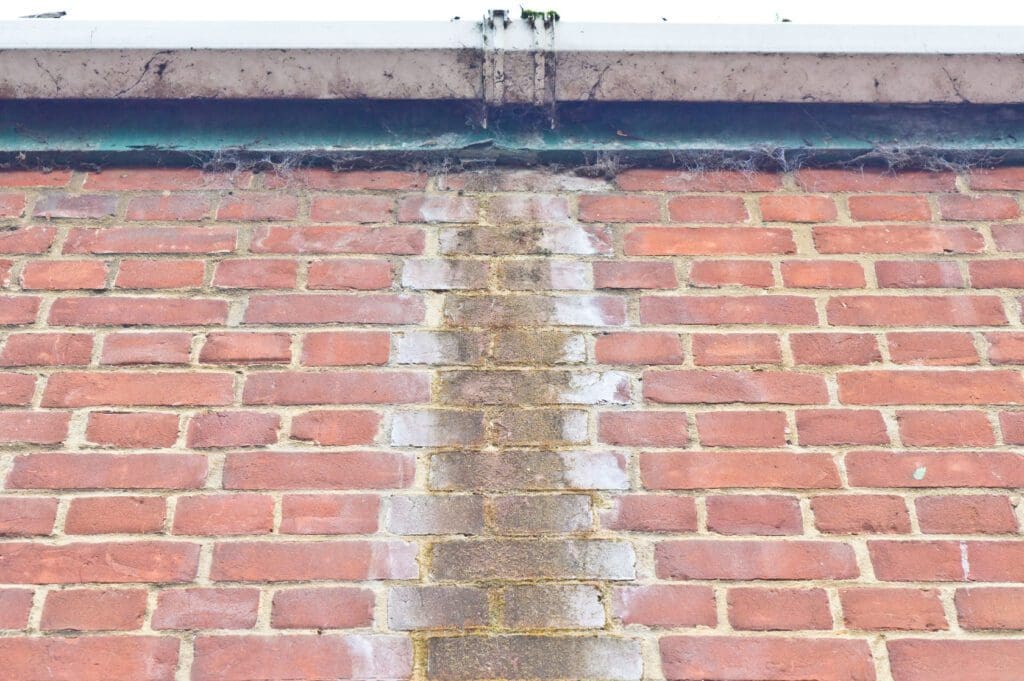
Whenever we see water dripping behind the gutter we automatically think of two things. Loose gutters or missing drip edge. Loose gutters for the most part are easy to identify. You can usually see them without having to climb a ladder.
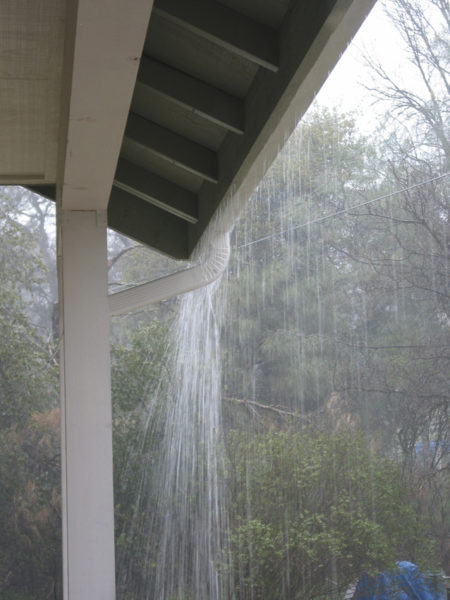
You may see the water dripping from behind the gutter, or even running down the wall during rain. If it goes on for long enough water stains on the wall will start to form. If you observe this happening to your home but the gutters look to be tight to the wall, the drip edge may be the issue.
Another thing to check first is if your downspouts are clogged. Clogs in the downspout will cause the water to leak from everywhere making you think you have major issues. When in reality it is just a clog in the downspout. Be sure to verify your downspouts are not clogged before having somebody come look at your roofing eave.
Basically you are going to have to do a process of elimination if you have water going behind your gutters. First verify the downspouts are not clogged. Once you’ve determined that the downspouts are working properly you’ll want to rule out if the gutter is loose or not. Click the link below for a full explanation of loose gutters.
2. Rotten Fascia Board
Whenever we see rotted fascia board, the first things we think of are loose gutters, missing drip edge, old age, or a combination of the 3. Over time all wood rots, especially fascia board. The average fascia board should last 10-20 years with proper drip edge configuration.
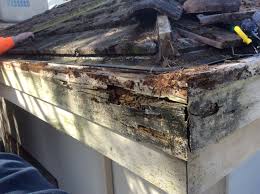
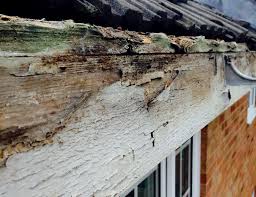
In all of the photos above you can clearly see the fascia board. That is because the gutters have been removed. When the gutter is attached to the fascia board you may actually have to climb up there to get a better view of it. Keep in mind that if you see any color other than white, then water damage has started and you’ll want to have that looked at.
3. Water Leak in Ceiling


Water leaking into your home is a very bad thing and it should never happen. Especially on your ceiling. If your ceiling is leaking then there is probably a problem with your roof. However, if the water damage is near the seam of the ceiling and the wall, then that water is more than likely coming from the gutter.
If you are experiencing leaks or water stains along your ceiling/wall edge than you definitely are going to want somebody to examine your gutters, fascia, and drip edge. Most of the time if it has gotten to this point then the fascia board is already rotted out and you are on short time.
Does My House Have a Drip Edge?
If you can safely use a ladder and don’t mind climbing up there, a visual inspection of your gutter drip edge is the best way to check. All you have to do is get high enough that you can see into the gutter. The drip edge should be visible without having to lift the shingles. It will look like a thin strip of trim across the top of the gutter.
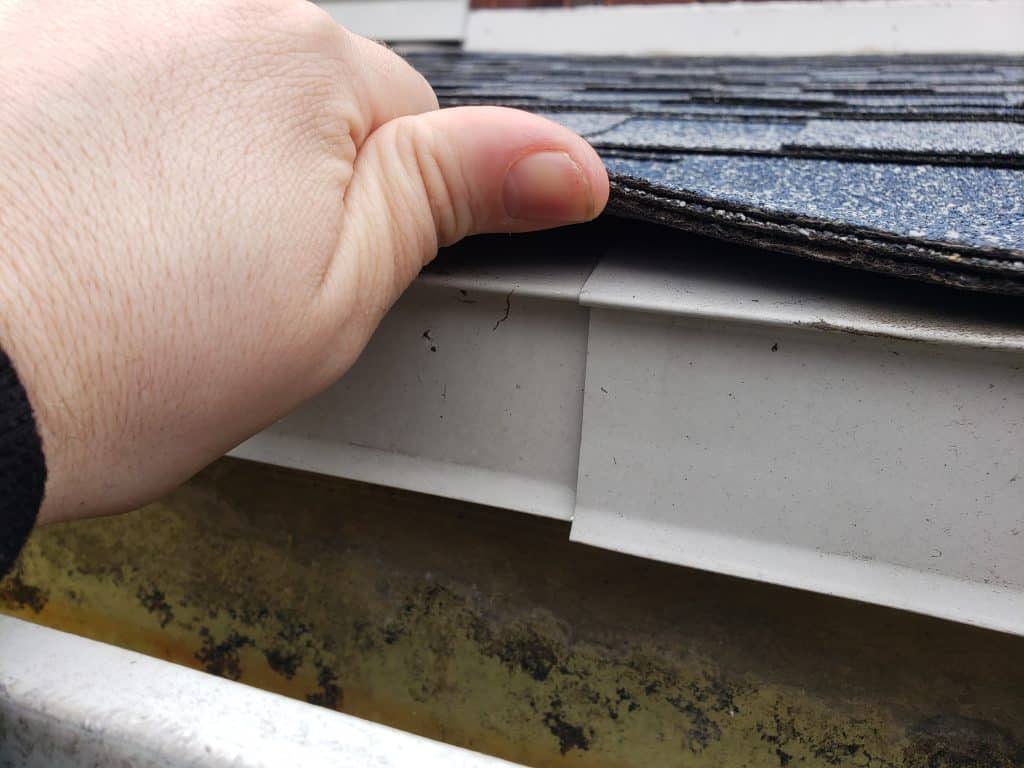
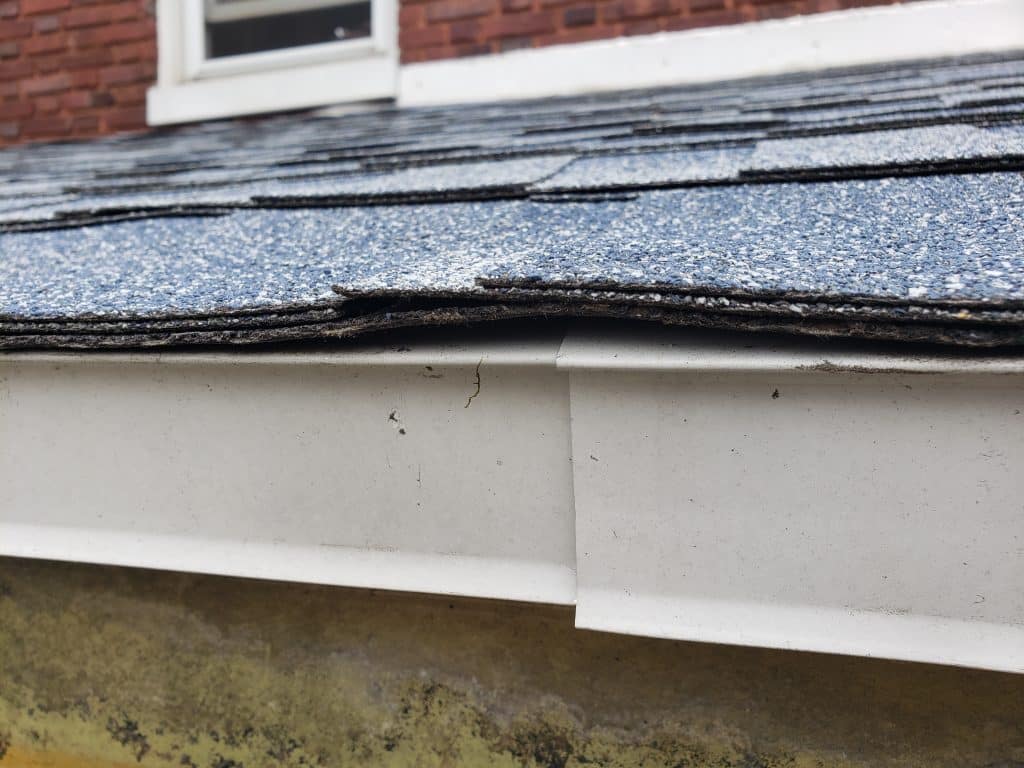
If you can’t see any drip edge hanging from under the shingles then it is probably missing. However, somebody may have installed it wrong or cut it wrong to where you can’t see it. Double-check your roofing eave for drip edge by gently lifting the shingle along the edge. If there is no plastic strip (like in the photos below) then your home does not have a drip edge gutter.
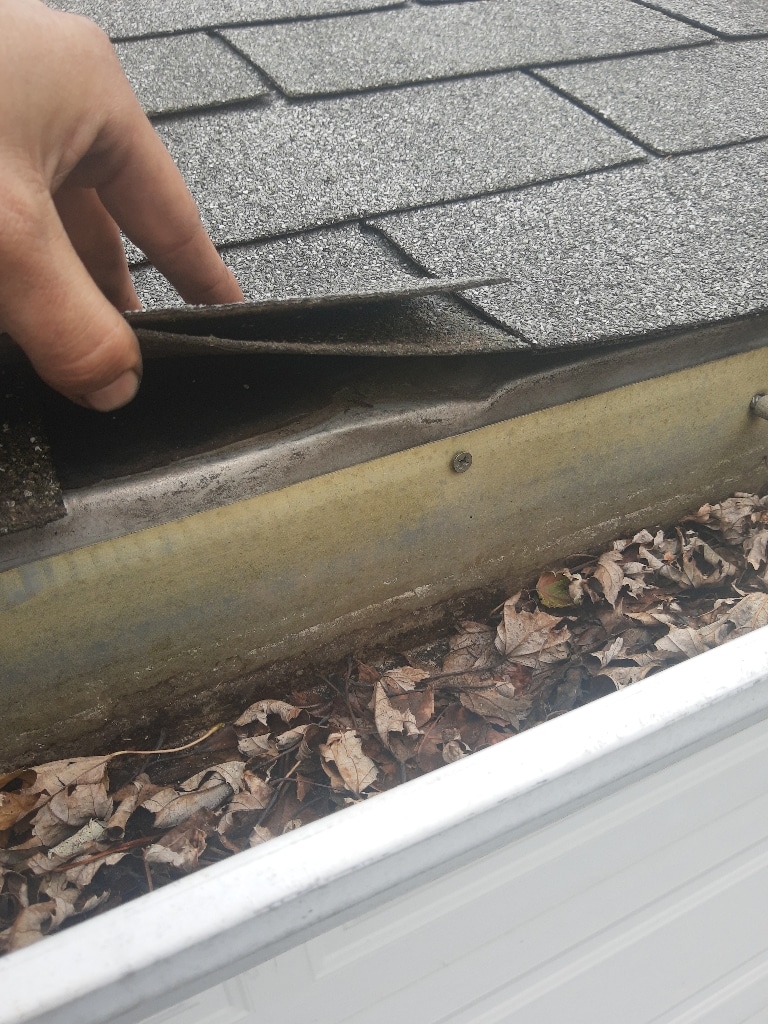
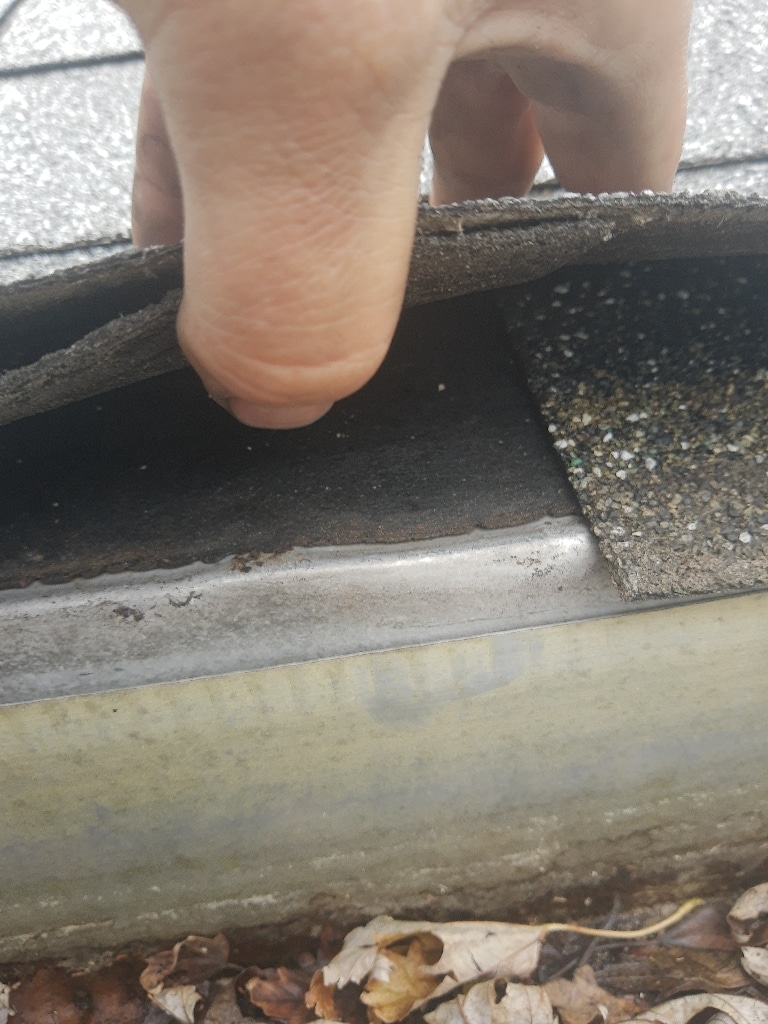
Who Do I Call to Install a Drip Edge?
Gutter companies and Roofing companies are the two types of service providers that specialize in Drip Edge Installation. That’s because it is such an integral part of both the roofing and the gutter system. You may also find some handyman that are able to install or service it as well. It’s not a very difficult part to install after all.
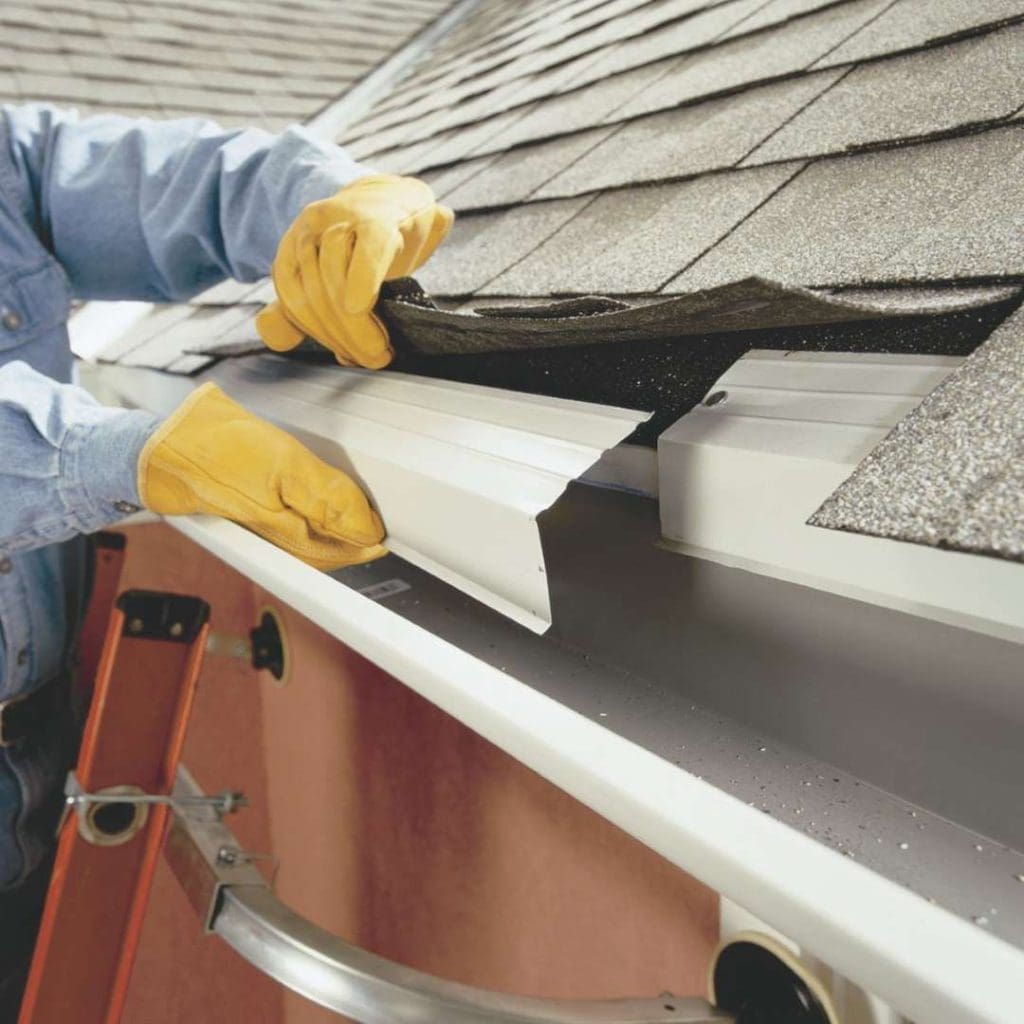
For the most part, drip edge installation is usually included with a new roof. On new home construction it is also installed by the roofing company. If you are having any roofing work done you should always ask the roofers to inspect the drip edge while they are up there.
Since it is so vital to the gutter system, it’s no wonder that gutter companies install, repair, and service them as well. If the gutter is installed over top it will cause water to go behind the gutter.
What Can Happen Without a Drip Edge
Drip edge is one of the cheapest components of your roof and gutter systems. However it is also one of the most important pieces of the puzzle. Without it the fascia board is going to rot away and fall down. To wrap this up we’ve included some pictures of homes that did not have drip edge.
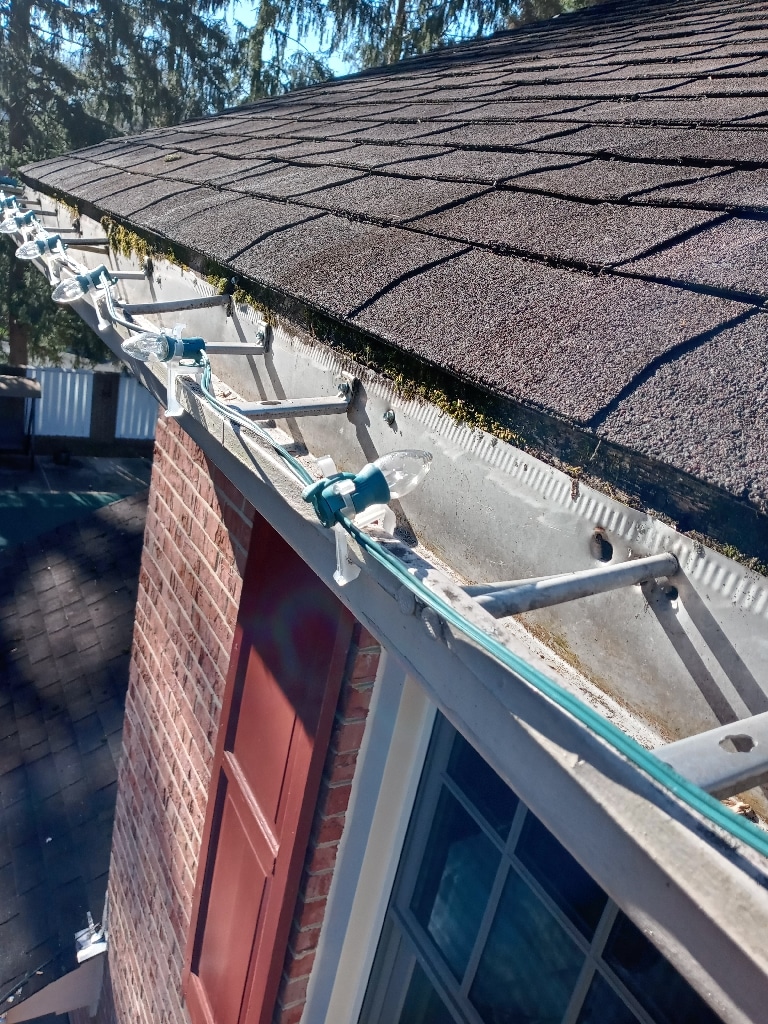
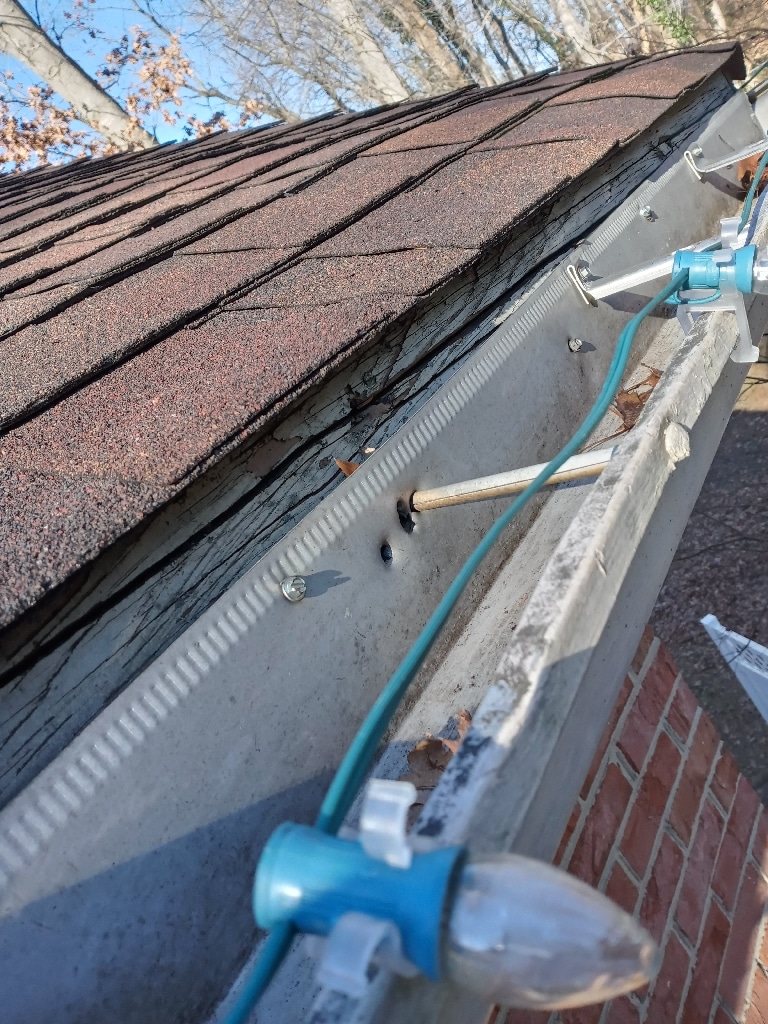
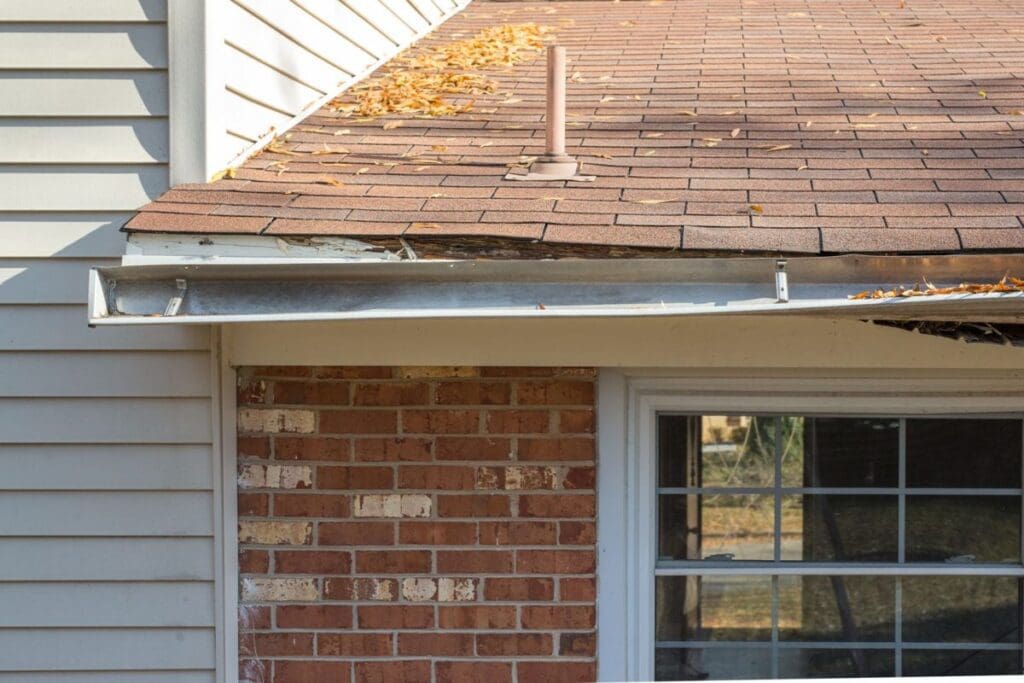
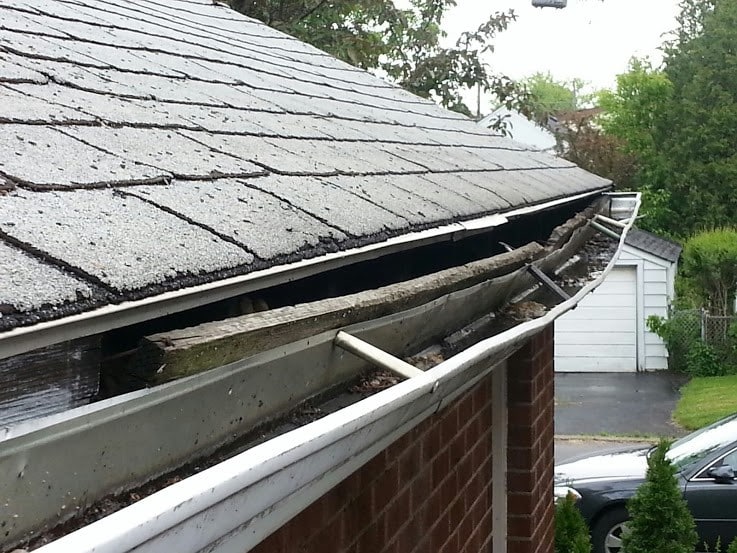
CLICK HERE to visit My Gutter Pro’s Official blog spot “Talking Gutters” where we give up tips and advice on keeping your gutter maintained.

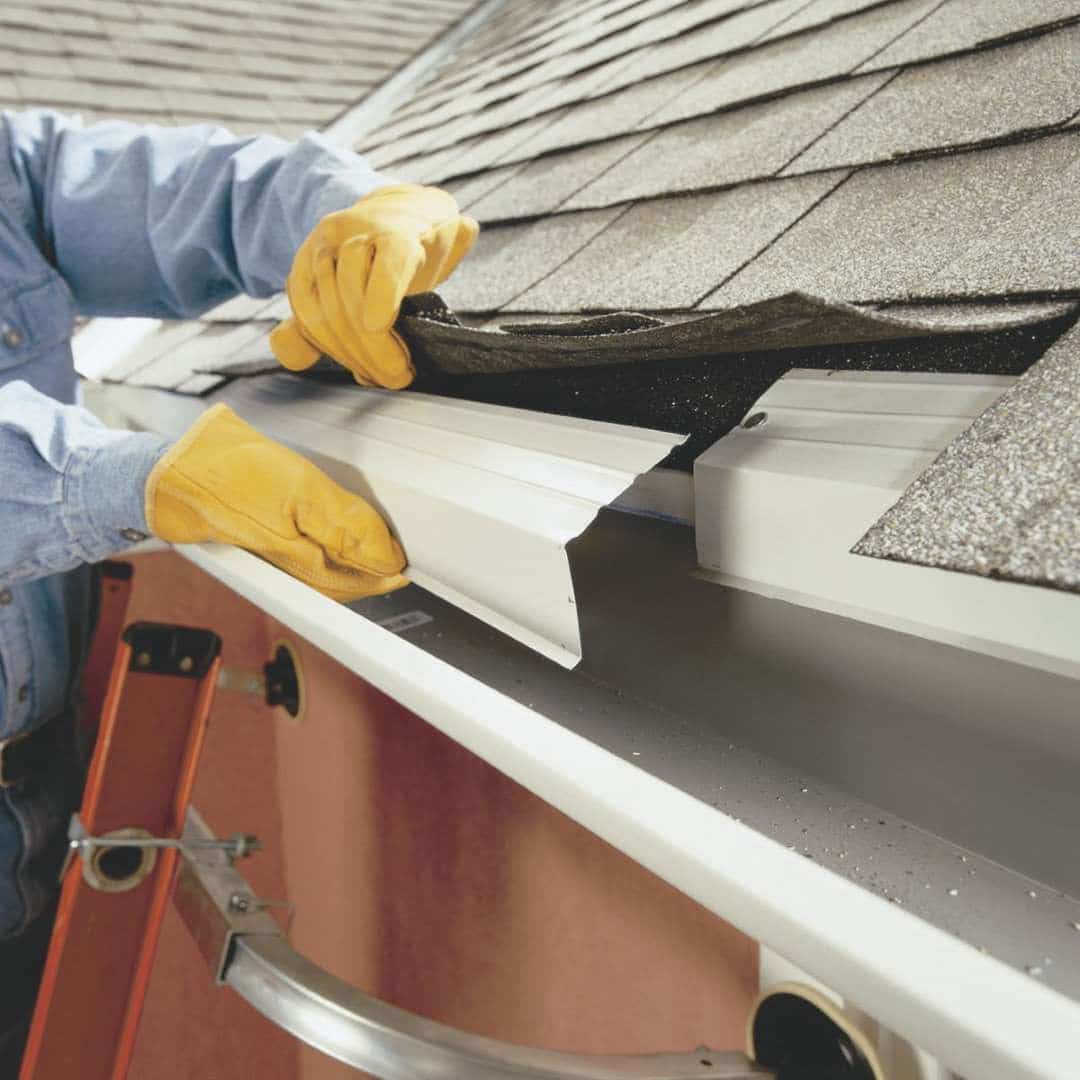


7 Responses
Do you have a location near Springfield Ohio? Would like a quote for fix to rain running between gutters and facia.
Jeff,
Sorry we are only located in Maryland and DC at this time. When rain is going behind the gutter between the fascia we would do a process of elimination to determine the cause. First you’ll want to make sure that downspout is not not clogged and rule out any gutter clog/drainage issues. Then the next things we would look into are loose gutters or the pitch/slope of the gutter. Loose gutters will allow water behind the gutter and also gutters being pitched wrongly will cause water to go behind the gutter.(and over the front or drip) If you rule all of those things out then the next thing we would look into are drip edge/flashing or roofing issues/valleys.
Hopefully they get you situated.
Thanks again.
MGP
I’m still learning from you, but I’m trying to achieve my goals. I certainly enjoy reading everything that is posted on your blog.Keep the posts coming. I loved it!
As always, this article was very well explained. I had a good time reading this one.
I relish, cause I found just what I was taking a look for. You’ve ended my 4 day long hunt! God Bless you man. Have a nice day. Bye